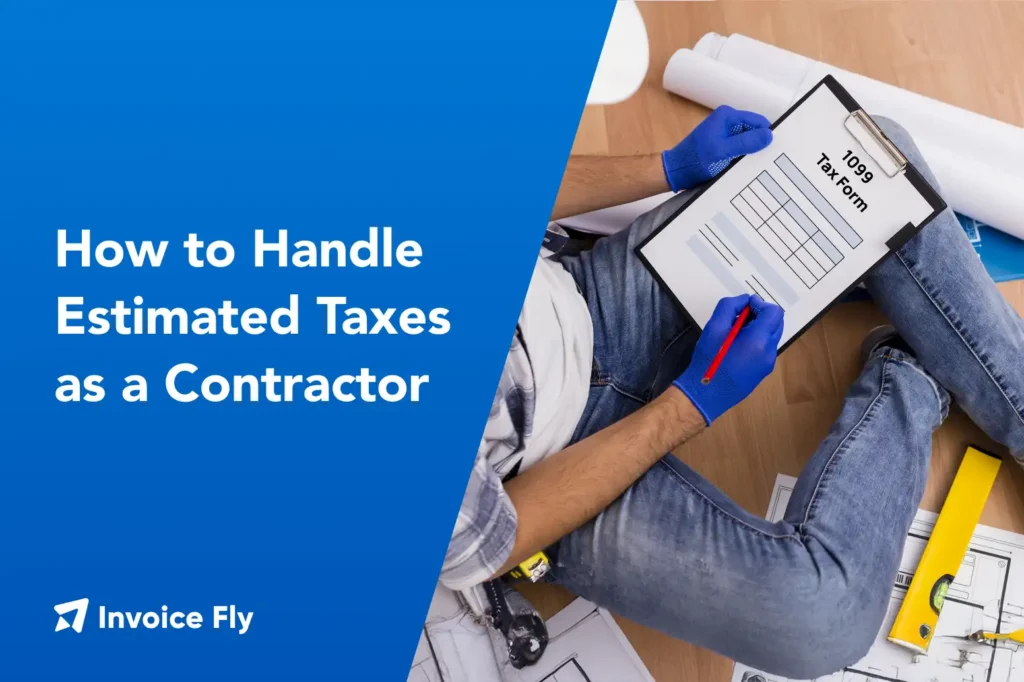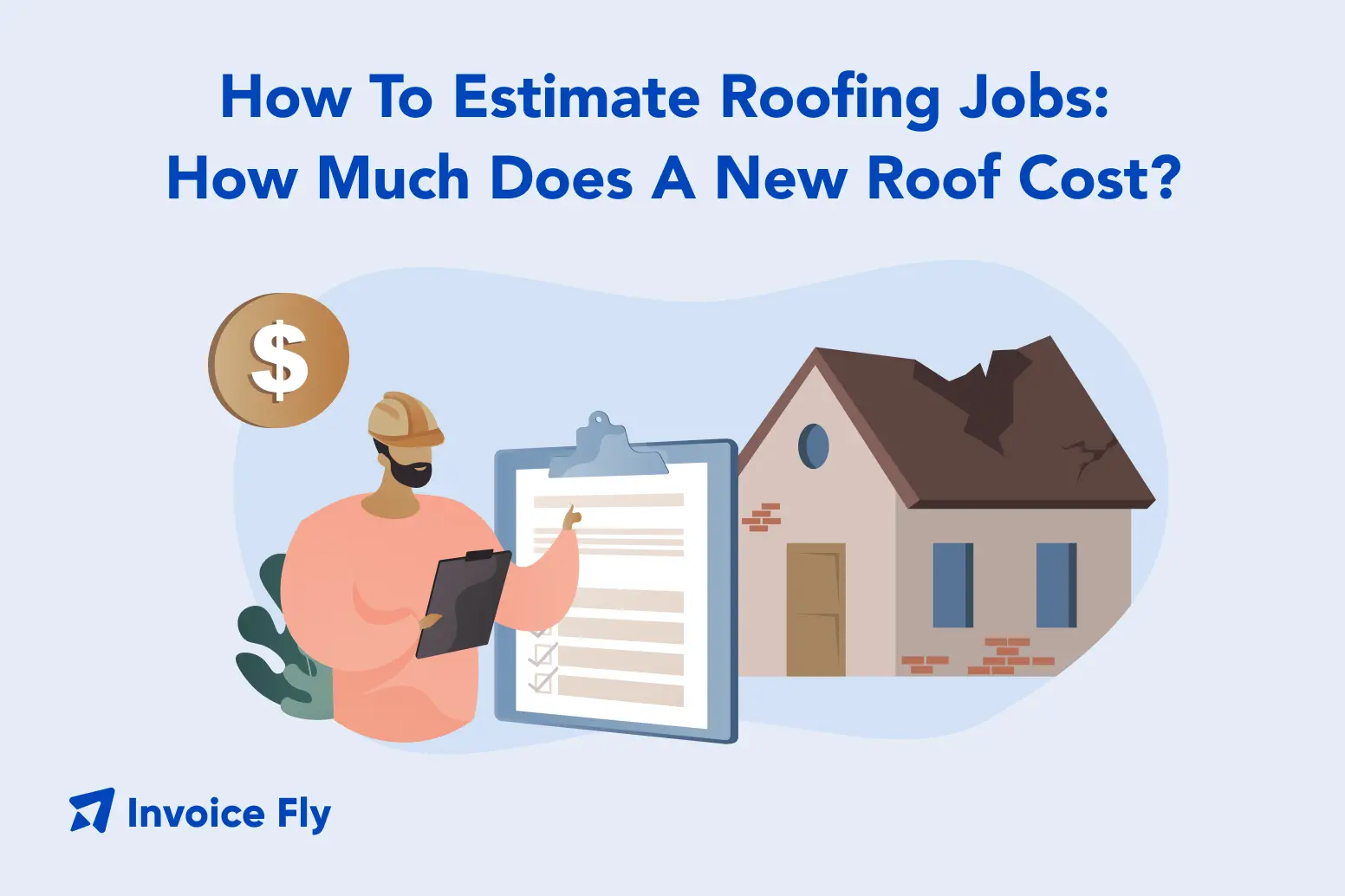How to Handle Estimated Taxes as a Contractor?

Table of Contents
- Who Needs to Pay Quarterly Taxes?
- Who Needs to Pay Quarterly Taxes?
- What Taxes Do Self-Employed People Pay?
- When Are Quarterly Taxes Due?
- What Is the Qualified Business Income Deduction?
- How to Calculate Estimated Tax Payments
- How to Pay Quarterly Taxes
- Avoiding Penalties
- Quarterly Payments vs. Annual Filing
- Final Thoughts
- FAQs About Handling Estimated Taxes as a Contractor
Working for yourself as a contractor comes with many perks, but it also means you need to handle your own taxes. Unlike employees who have taxes taken out of each paycheck, contractors need to pay taxes directly to the IRS throughout the year. These are called quarterly estimated tax payments.
This guide will help you understand estimated taxes, figure out how much to pay, and make sure you don’t miss important deadlines.
Who Needs to Pay Quarterly Taxes?
You generally need to make quarterly tax payments if you expect to owe $1,000 or more in federal taxes when you file your annual return. This usually includes:
- Independent contractors and freelancers
- Self-employed business owners
- Gig workers (like rideshare drivers or food delivery)
- People with income that doesn’t have taxes withheld (like rental income)
If you also have a regular job where taxes are taken out of your paycheck, you might not need to make quarterly payments if enough tax is already being withheld to cover what you’ll owe.
For more details about your tax requirements, check out our Independent Contractor 1099 Form: Complete Guide for Tax Filing.
Who Needs to Pay Quarterly Taxes?
Even if you’re not required to pay estimated taxes, it’s often a good idea to do so if:
- You’re new to self-employment
- Your income changes a lot throughout the year
- You want to avoid a big tax bill in April
- You prefer to budget for taxes in smaller amounts
Paying quarterly helps you avoid the shock of a large tax bill when you file your annual return. It also helps you avoid penalties for not paying enough throughout the year.
What Taxes Do Self-Employed People Pay?
As a self-employed contractor, you need to pay:
1. Income Tax
This is based on how much money you make after deductions. Federal income tax rates range from 10% to 37% (as of 2024), depending on how much you earn.
2. Self-Employment Tax
This is a big difference between employees and contractors. Self-employment tax covers:
The total is 15.3% on your earnings. Employees only pay half of this amount, with their employers paying the other half. As a self-employed person, you pay both halves, though you can deduct part of this when calculating your income tax.
3. State and Local Taxes
Depending on where you live, you may also need to pay:
- State income tax
- Local or city income tax
If you work in multiple states, check out our guide on Multi-State Income: Tax Considerations When Working Across State Lines.

When Are Quarterly Taxes Due?
The IRS divides the tax year into four payment periods. For 2025, the due dates are:
2025 Tax Year
- First quarter (Jan-Mar): Due April 15, 2025
- Second quarter (Apr-May): Due June 16, 2025
- Third quarter (Jun-Aug): Due September 15, 2025
- Fourth quarter (Sep-Dec): Due January 15, 2026
If a due date falls on a weekend or holiday, it moves to the next business day.
What Is the Qualified Business Income Deduction?
The Qualified Business Income (QBI) deduction is a tax break that can help self-employed people save money. It lets many contractors deduct up to 20% of their business income from their taxes.
Key points about QBI:
- It’s available to most sole proprietors (which is what many contractors are)
- For 2024, the full deduction is available if your taxable income is below $191,950 (single) or $383,900 (married filing jointly)
- The rules get more complicated for higher income levels and certain types of businesses
This deduction can significantly lower your taxes. For more ways to reduce your tax bill, see our guide on Tax Deduction Tips for Small Business.
How to Calculate Estimated Tax Payments
Figuring out how much to pay each quarter can be done in a few different ways:
Method 1: Based on Last Year's Taxes
The easiest way is to pay:
- 100% of your previous year’s total tax if your adjusted gross income was $150,000 or less
- 110% of your previous year’s tax if your income was higher
Just divide this annual amount by four to get your quarterly payment.
Method 2: Based on This Year's Expected Income
You can also pay 90% of what you expect to owe for the current year. This means you need to:
- Estimate your income for the year
- Subtract your expected deductions
- Calculate the tax on that amount
- Add self-employment tax
- Subtract any tax credits
- Take 90% of this total and divide by four
Method 3: For Variable Income
If your income changes a lot throughout the year, you can pay different amounts each quarter based on what you actually earned in that period.
For guidance on how much to set aside, see our article on What Percentage of Income Should Small Businesses Set Aside for Taxes?.
Let’s look at how Sarah, a freelance landscaper, handles her estimated taxes:
Sarah earned $80,000 last year after business expenses, and paid a total of $16,000 in federal taxes. This year, she expects to earn about $90,000.
Using Method 1 (based on last year):
- Sarah would pay 100% of last year’s tax: $16,000
- Divided by 4 quarters = $4,000 per quarter
Using Method 2 (based on this year's estimate):
- Estimated income: $90,000
- Minus standard deduction ($14,600 for single filers in 2024): $75,400
- Estimated income tax (using 2024 tax brackets): approximately $12,000
- Plus self-employment tax (15.3% of $90,000 × 92.35%): approximately $12,700
- Total estimated tax: $24,700
- 90% of estimated tax: $22,230
- Divided by 4 quarters = $5,557.50 per quarter
Sarah decides to use Method 1 for the first two quarters while her business is slower, then reassess her income mid-year. She creates calendar reminders for each due date and sets up an EFTPS (see below) account to make payments online.
She also opens a separate savings account where she transfers 30% of each client payment to ensure she always has enough money for taxes.
How to Pay Quarterly Taxes
The IRS offers several ways to pay your estimated taxes:
1. Online Payment
You can pay directly from your checking or savings account using IRS Direct Pay. It’s free and you’ll get immediate confirmation.
2. Electronic Federal Tax Payment System (EFTPS)
This free service lets you schedule payments up to a year in advance. You need to sign up first, but it’s great for regular tax payments.
3. IRS2Go App
The official IRS app lets you make payments on your phone.
4. Credit or Debit Card
You can pay with a card through approved payment processors, but they charge a fee.
5. Check or Money Order
You can mail a check or money order with Form 1040-ES payment voucher.
When making payments, make sure to specify that you’re paying estimated tax for the right tax year and quarter. For more information about organizing your tax documents, see our Schedule C Filing: A Step-by-Step Guide for Independent Contractors.
Avoiding Penalties
If you don’t pay enough in estimated taxes, you might have to pay penalties. The IRS charges interest on the amount you didn’t pay, starting with the federal short-term rate plus 3%. For example, if you underpay by $1,000, you might owe $30–$50 or more, depending on how long the money was late. If you miss multiple payments or owe a lot, the penalty can get much bigger.
To avoid this:
Pay on Time
Make sure your quarterly payments reach the IRS by the due dates.
Pay Enough
Use one of the safe harbor methods:
- 90% of this year’s tax, or
- 100% of last year’s tax (110% if your income was over $150,000)
Apply Refunds from Last Year
If you overpaid last year, you can apply the refund to this year’s estimated taxes.
Adjust if Your Income Changes
If your income changes significantly, recalculate your estimated payments for future quarters.
Special Considerations for Contractors
New Contractors
If this is your first year as a contractor:
- Make your best guess based on expected income
- Consider setting aside 25-30% of your income for taxes
- Adjust your estimates if your actual income is different from what you expected
Variable Income
If your income changes throughout the year:
- Consider using Method 3 (annualized income)
- Keep good records of income by quarter
- Be ready to make larger payments in quarters when you earn more
Keeping Records
Good recordkeeping is crucial:
- Track all business income and expenses
- Save receipts for deductions
- Use accounting software or our Invoice Maker to keep track of your income
- Consider having separate business and personal bank accounts
State Estimated Taxes
Don’t forget that most states with income tax also require quarterly payments:
- Due dates might be different from federal deadlines
- Payment methods vary by state
Quarterly Payments vs. Annual Filing
Remember that making quarterly estimated tax payments doesn’t replace filing your annual tax return. You still need to:
- File Form 1040 and Schedule C by April 15 (or later with extensions)
- Report all income, deductions, and credits
- Calculate your actual tax
- Compare what you’ve already paid through estimated payments with what you actually owe
- Pay any remaining balance or request a refund if you overpaid
Final Thoughts
Managing estimated taxes is a crucial skill that can make or break your success as an independent contractor. While it might seem overwhelming at first, creating a solid system now will save you countless headaches (and dollars) down the road.
Think of your quarterly tax payments as an investment in your business stability. By setting aside money regularly, you protect yourself from unexpected tax bills that could derail your finances.
For new contractors, working with a tax professional during your first year can help you identify valuable deductions and establish good habits from the start. The money spent on guidance can often be recouped through proper tax planning.
As your business grows, revisit your tax strategy regularly. When your taxes are under control, you can focus your energy where it belongs: on serving clients and enjoying the freedom that comes with being your own boss.

FAQs About Handling Estimated Taxes as a Contractor
The IRS will charge you a penalty, kind of like interest, on what you didn’t pay. The rate changes but is usually the short-term federal rate plus 3%.
If you had no income that quarter, you usually don’t need to pay. But if you’re using the safe harbor method based on last year’s taxes, you still have to make the payment.
No worries—you’ll get a refund when you file your tax return, or you can apply the extra to next year’s taxes.
W-2 employees have taxes taken out by their employer. 1099 contractors have to pay their own taxes, usually by making estimated payments.
Read our article for more information about 1099 contractor's and W2 Employee's Taxes.



